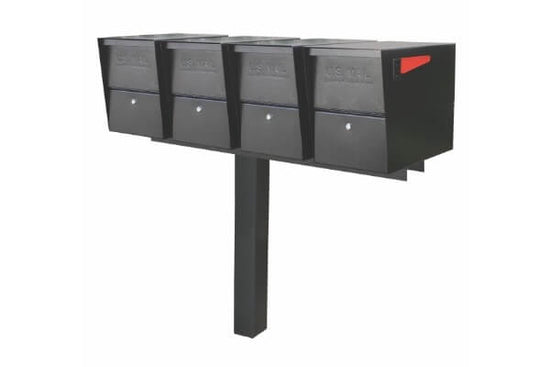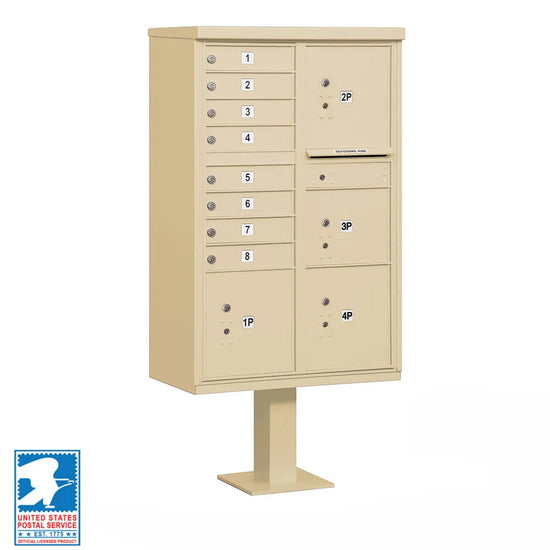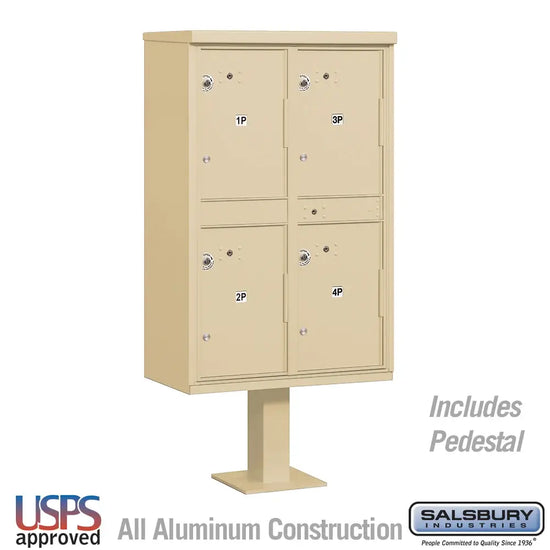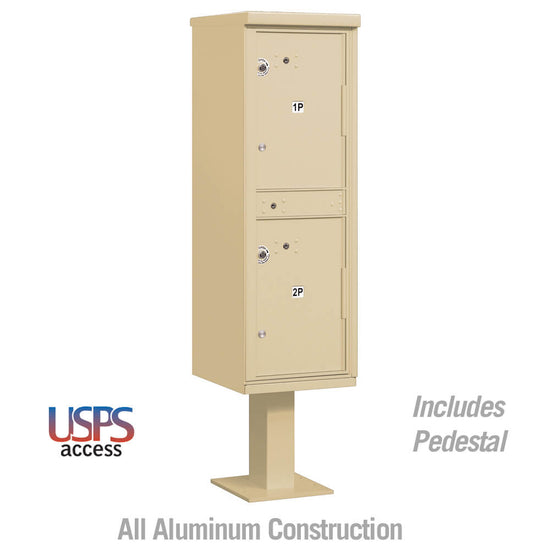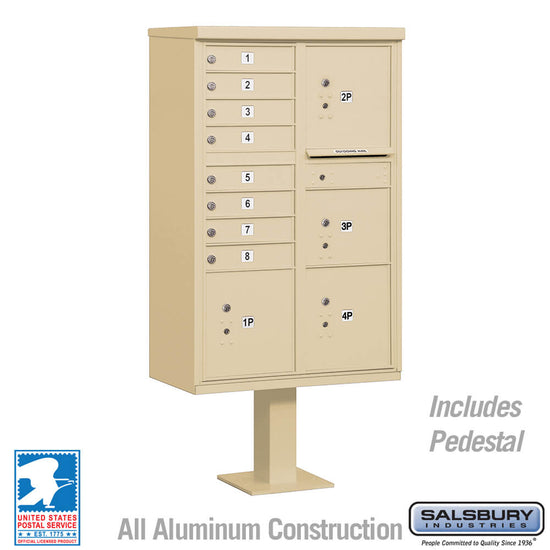Today, sending and receiving mail is simple ― just drop it in your front yard mailbox or opt for a P.O. Box or PMB for added security. But believe it or not, it wasn’t always this convenient.
Rewind to the late 1850s, when American city streets were just coming alive. Sending and receiving mail back then was a hassle, prompting the ingenious idea to attach small letter boxes to lampposts and buildings for U.S. Mail drop-offs.
By the 1890s, this concept had evolved into larger, freestanding “package boxes,” setting the stage for the familiar collection boxes we rely on today.
Curious to know who invented the mailbox? Let’s explore history and reveal the brilliant minds that shaped the mailbox as we now know it.
Mailbox Origins: New York City’s First Collection Boxes in 1833
In 1833, New York City kickstarted the mailbox story with letter carriers strategically placing boxes along their routes. Every day (except Sundays) at 1.00 pm, carriers collected letters for a pocket-friendly fee of two cents each.
However, these early boxes faced removal, causing a bit of annoyance for citizens living miles away from the Post Office.
The mailbox trend quickly spread to other cities. By 1855, New York City saw a boom in mailbox installations, collecting mail four times daily. However, not everyone was impressed.
Postal reformer Pliny Miles criticized the “1,000 little tin boxes” hidden in businesses, accessible only during business hours.
He advocated for a more visible, accessible, and secure mailbox design ― a call that would shape future mail collection boxes.
Albert Potts’ Street Letter Boxes: Lamppost-Mounted Mail Collection in 1858
In 1858, Philadelphia’s Albert Potts patented cast-iron letter boxes for city lampposts, much like today’s wall-mounted mailboxes. By July 1859, over 300 adorned Philly streets, revolutionizing mail collection.
Potts’ vision spread, with Boston receiving 33, and in late 1859, lamppost boxes were introduced to New York City.
In 1860, John Murray installed 574 cast-iron collection boxes in New York City, collecting mail four times daily. This innovation paved the way for free mail delivery in 49 cities from July 1, 1863, marking a new era in postal services, all sparked by Potts’ lamppost mailboxes.
Round-Top Mailboxes: 1870s-1880s
In the 1870s and 1880s, over 35,000 round-top mailboxes from the Union Foundry and Manufacturing Company of Reading, Pennsylvania, became fixtures in cities.
Orr, Painter & Company took over the contract in 1878. These mailboxes are simple to use and have a side metal flap revealing the letter slot.
However, these early mailboxes weren’t without a few drawbacks:
- Limited capacity: Despite their convenience, these mailboxes had limited space, filling quickly during peak mail times. The volume of mail, even in the 1870s, required larger mailboxes.
- Weather problems: These mailboxes mounted on lampposts lacked weather resistance, exposing letters to the elements.
- Security concerns: Unlike modern locking mailboxes, these early letterboxes hung openly, making them susceptible to unauthorized access.
Advancing Security With the Doremus Box in 1889
In 1889, the Post Office Department went through many mailbox designs and picked Willard D. Doremus’ creation. The reason was simple: Doremus’ box offered enhanced security features. It had a top lid covering the whole front, ensuring letters got extra protection.
Under a 4-year contract beginning July 1, 1889, Doremus supplied the Department, and Maybury & Ellis of Detroit, Michigan, took over in 1893.
The cast-iron boxes, available in three sizes, were crafted by subcontractor Orr, Painter & Company of Reading, Pennsylvania.
Despite its security benefits, the Doremus box was puzzling for mailers, earning the moniker “pigs-in-clover puzzle letter box” in 1891 and continuing to baffle users even a year later.
Introducing the Large Collection Boxes
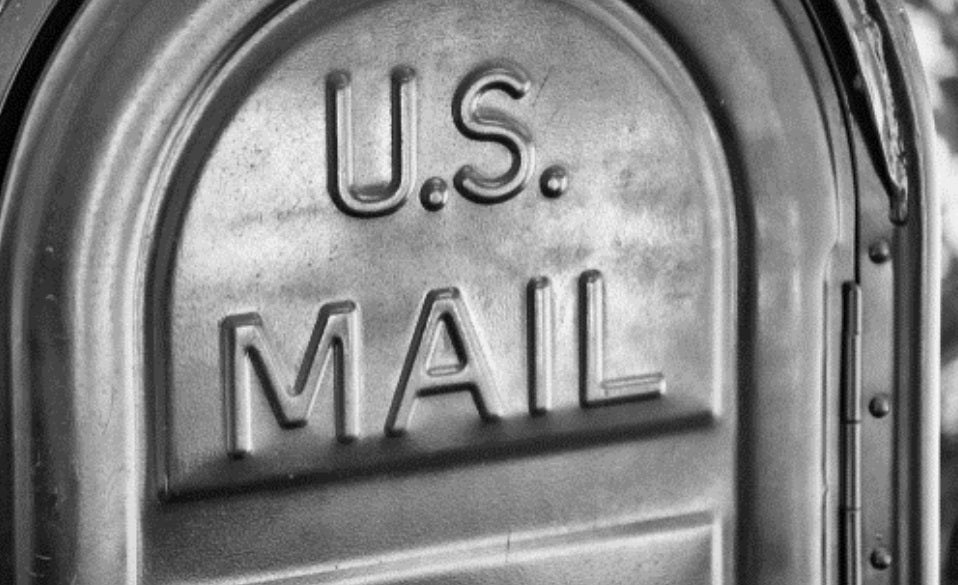
While street letter boxes served urban customers well for letters, they weren’t exactly practical for mailing newspapers and packages.
Rather than make the long trip to the Post Office, many opted for a simpler solution: placing oversized mail on top of letter boxes. While this practice was discouraged by Postmasters, it became widespread.
In 1888, Postmasters in some Eastern cities introduced specialized “package boxes” to address the demand for large collection boxes. By 1890, these boxes were everywhere, solving the big mail problem.
The Post Office Department officially contracted for them in 1893, crafted from rolled steel by the Van Dorn Iron Works Company. In 1897, a game-changing combination letter and package box was introduced in Baltimore.
The success prompted plans for rapid expansion, with the first contract inked in 1904. On March 30, 1931, the “Large Collection Box” replaced the combination box, bringing a new era in mailbox functionality.
Evolution of Mailbox Colors and Decals
Here’s a quick rundown of the evolution of the iconic blue USPS mailbox that’s now a familiar sight on street corners today.
- Green, from 1860: Letterboxes varied in shades of green, like “dark green” in Reading, Pennsylvania, and “bright green” in Oakland, California (1882-1883).
- Red in Some Cities by 1887: Washington, DC, embraced red boxes by 1887 for improved visibility, setting a trend. Baltimore and Boston followed suit in 1889.
- Red, from 1891: A uniform shift to red boxes occurred in 1891, with some cities accenting raised letters in yellow or gold.
- Silvery-White, from 1897: In 1897, a short-lived era of silvery-white “aluminum” colored boxes began, facing durability issues and graffiti concerns.
- Green, from 1905: Switching to green enamel paint with white lettering in 1905, experimenting with red in Washington, DC, in 1908.
- Color shift confusion in 1913: A brief experiment with vermilion or coach-red in 1913 was abandoned due to public confusion with fire alarms and police call boxes.
- Red, White, and Blue, from 1955: Postmaster General Summerfield’s patriotic touch in 1955 painted collection boxes red, white, and blue for easy identification.
- Decals and Simplification (1962-1969): 1962 introduced “U.S. MAIL” decals, transitioning to dark blue boxes in 1969 for improved visibility.
- Dark Blue, with Decals, since 1970: Adopting the “One Color Letter Box Painting Program” in 1970, all street collection boxes shifted to a solid dark blue color. Reflective red and white decals featuring “U.S. MAIL” and the new eagle seal marked the final evolution.

